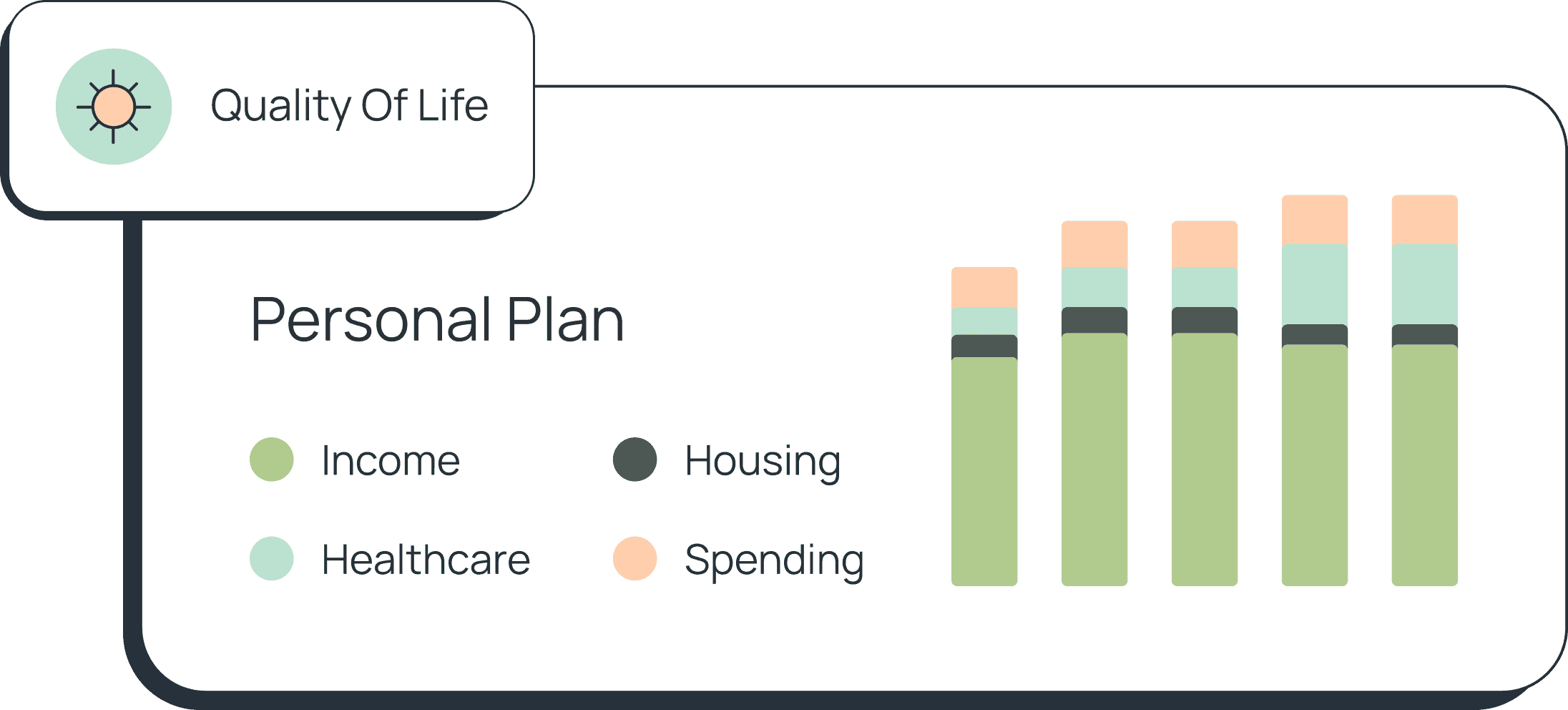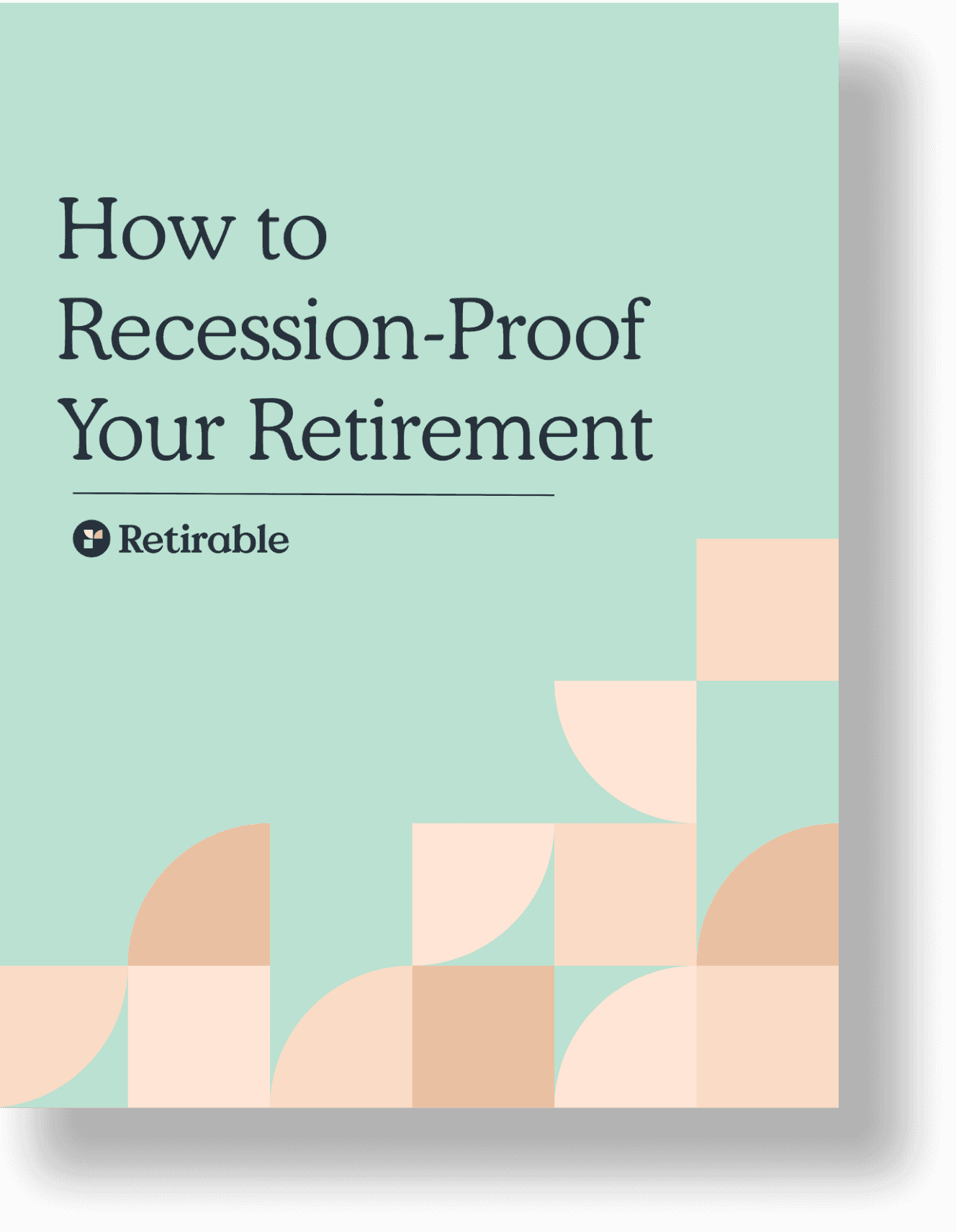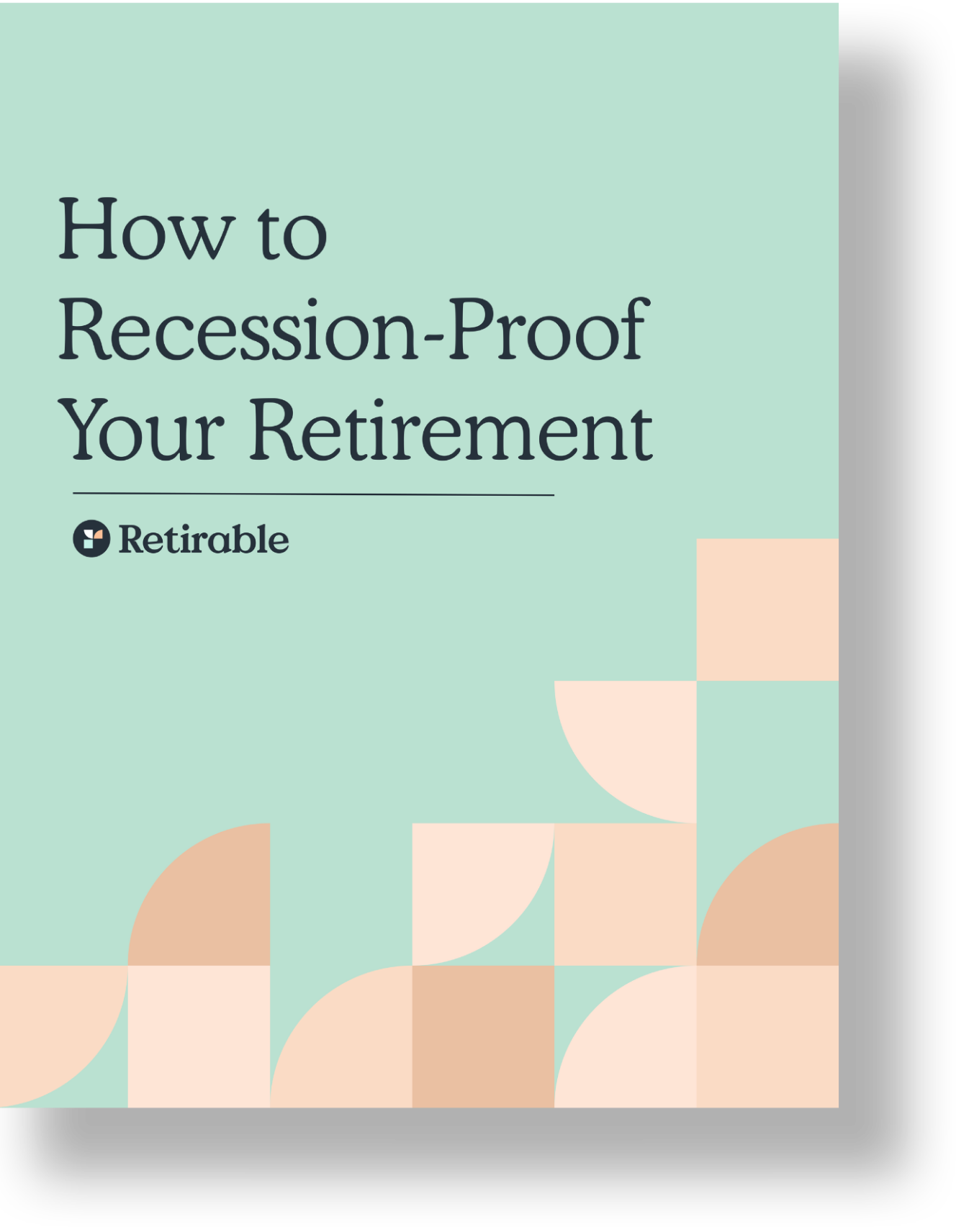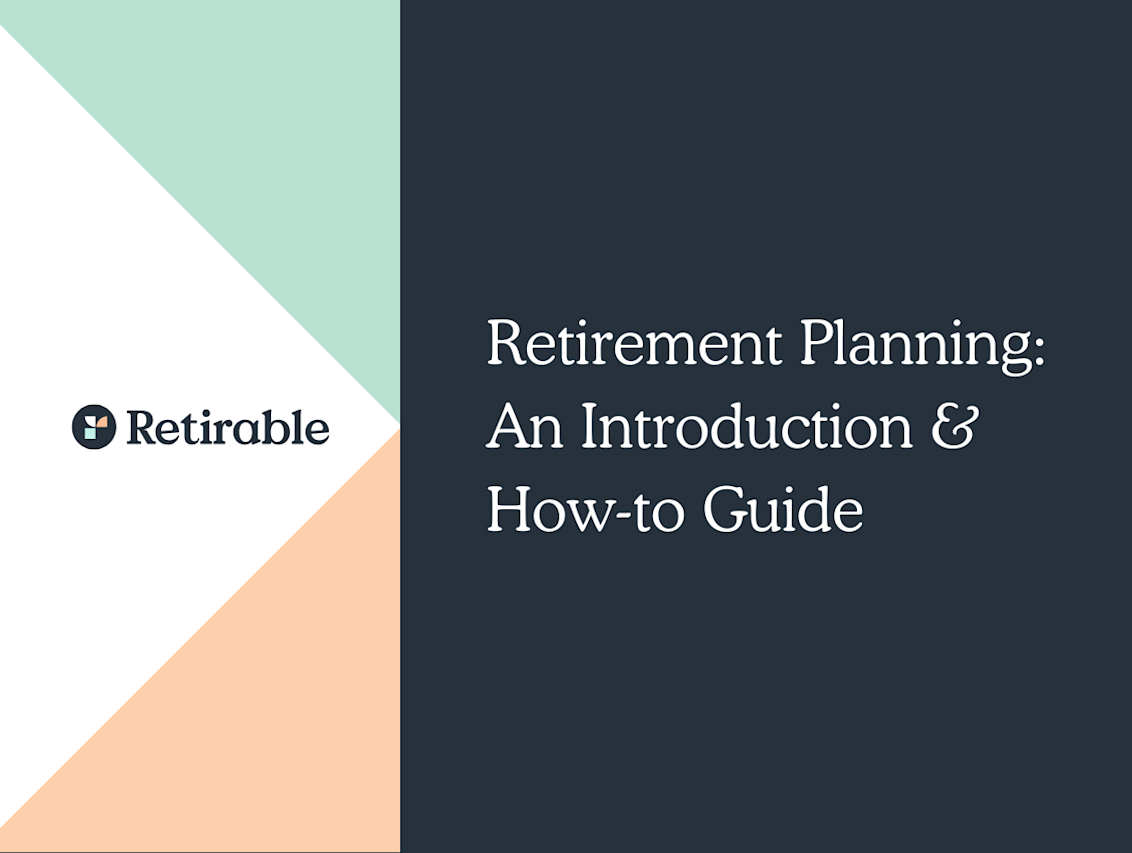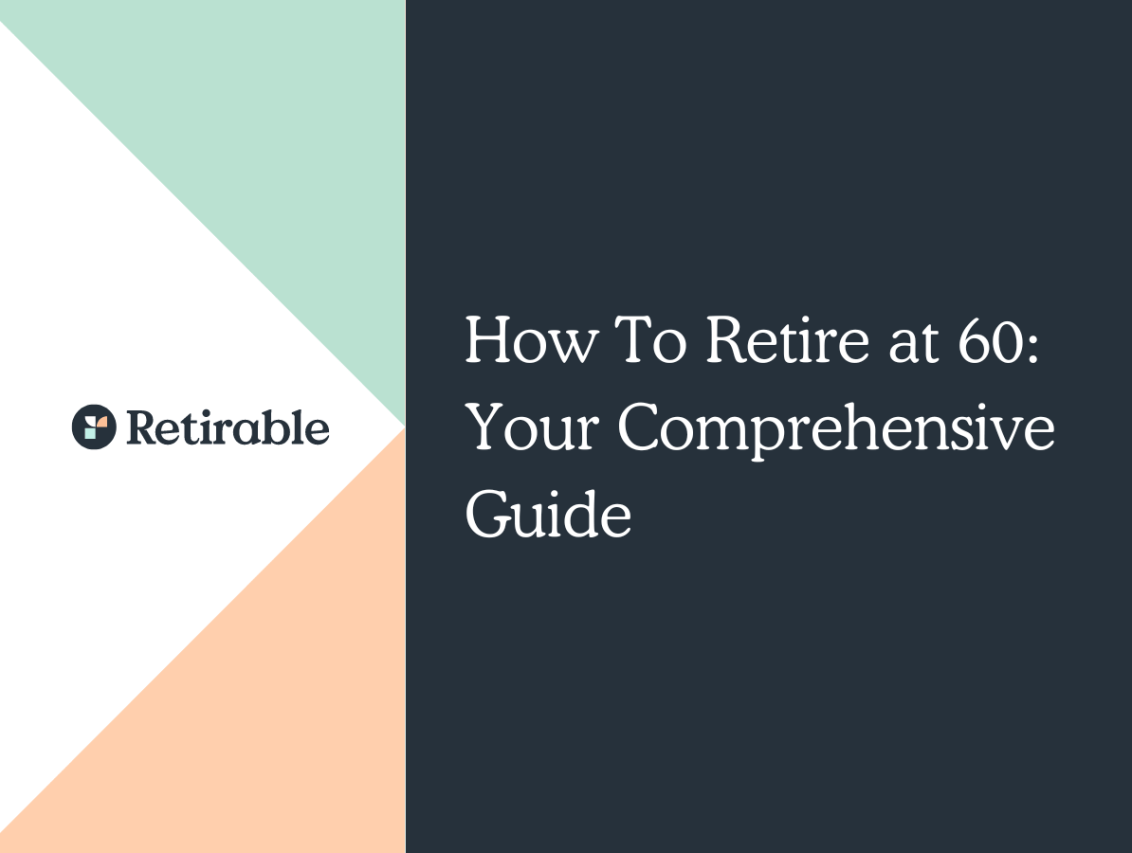Retirement Accounts
Just turned 40 and suddenly struck with worry that you haven’t saved enough for retirement? Don’t fear—it’s never too late to start or kick things into high gear. Read on to learn how to cut down on spending and debt and begin the process of supercharging your retirement savings in your 40s.

C.E Larusso
•
Published March 19th, 2024
•
Updated April 1st, 2025
Table of Contents
Key Takeaways
Even in your 40s, you still have 20-25 years to save, and you’re entering your peak earning years
Understand your spending, budget and lifestyle needs so you can better assess your retirement savings strategy
Compound interest is your friend. If you invested $3,500 at age 40 you’d have $29,618 at age 60, assuming a 6% annual return and an additional $500 deposit each year
Just turned 40 and suddenly struck with worry that you haven’t saved enough for retirement? Don’t fear—it’s never too late to start or kick things into high gear. Read on to learn how to cut down on spending and debt and begin the process of supercharging your retirement savings in your 40s.
Saving for Retirement at 40 Years Old
Most articles about saving for retirement will reiterate over and over again that the sooner you get started the better. And that’s true, but you shouldn’t beat yourself up if you’re beginning to save for retirement in your 40s. You still have 20-25 years to save, and you’re entering your peak earning years when you should be able to save the most, which will grow exponentially with compound interest. It’s more important that you begin to save now and put your energy towards reducing spending and debt rather than think about where you’d be if you started in your 30s.
Understanding Your Current Financial Situation
First things first: make sure you have a budget. You’ll never know how much money you can potentially save each month if you don’t know where your money is going, and if you don’t stick to a financial plan you set for yourself. For instance, if you are going out to eat once per week, that can be $200–$400 per month—even cutting that down in half can help you put $100–$200 in your savings each month.
You should also take a close look at all your debts and see which have the highest interest—consider paying those off first to reduce the amount of interest you pay each month (this is called the Avalanche Method). Another strategy for reducing debt is the Snowball Method, which states that you pay off your smallest debt first and then use the amount you were paying towards that loan to the second-smallest debt, working your way through your loans until they are all paid off.
If you can, pay off your mortgage as well. Doing so will eliminate this big expense during your retirement years—housing is most retirees’ number one expense.
The Power of Compound Interest in Your 40s
Compound interest is your best friend. Unlike simple interest, which is calculated on the principal amount, compound interest is calculated on the initial principal plus all the accumulated interest from the previous periods. If you start saving at 40, you still have 20-30 years of compound interest ahead of you.
Let’s take a look at how that breaks down:
- If you invested $3,500 at age 40 you’d have $29,618 at age 60, assuming a 6% annual return and an additional $500 deposit each year
- If you invested the same amount ($3,500) at age 40, invested an additional $500 each year, and waited until age 65 (25 years), you’d have $42,454
(Assumes $3,500 invested at age 40 with $500 added each year at a 6% annual return.)
These are relatively small investments, which is why the more you can save now the better returns you’ll see in the future.
Maximizing Employer Benefits
In your 40s and 50s, you’re statistically most likely to be earning the most money you will during your life—these are called your peak earning years. After age 54 for women and age 65 for men, your income might plateau. Given that you’re either approaching or at your peak, it’s an excellent time to confirm that you’re making the most of your employer retirement benefits.
Sign up for any 401(k) or 403(b) your employer offers, and make sure you are contributing the percentage that your employer matches—this is usually 3–5%. If you can afford it, contribute more. The employer match is basically a free bonus in your retirement account, so there’s no reason to not take advantage of this benefit.
Max out your contributions if you can.
- In 2025, the 401(k) contribution limit is $23,500, with an additional $7,500 allowed if you’re 50 or older.
- This brings your employee contribution limit to $31,000 in 2025 if you're eligible for catch-up contributions.
Pro tip: After maxing out your 401(k), consider opening a Traditional or Roth IRA to diversify.
- In 2025, the annual IRA contribution limit is $7,000, or $8,000 if you’re 50 or older.
IRAs and Other Investment Opportunities
As you are considering opening an IRA account, it’s imperative that you understand the difference between a traditional IRA and a Roth IRA.
- Traditional IRA: A traditional IRA allows you to make pre-tax contributions. When you withdraw from your traditional IRA during retirement, the withdrawn amount will be considered income. In addition, traditional IRAs have mandatory distributions starting at age 73.
- Roth IRA: A Roth IRA allows you to make after-tax contributions, which can be helpful if you think you will be in a higher income bracket during retirement, as withdrawals will be tax-free.
In addition to IRAs, you should consider other investment options such as real estate, stocks, bonds, and more. The best way to discover which of these investment assets is best for you is by talking to a trusted and Certified Financial Planner (CFP®), who can develop a personalized plan for your retirement strategy and goals.
Take Advantage of Catch-up Contributions
In your 40s, you won’t be able to take advantage of catch-up contributions, but you will as soon as you turn age 50, and you should if you’re financially able. Here’s how they work: starting at age 50, you’re eligible to make additional contributions to your retirement accounts above the contribution maximums for the year.
In 2025, the 401(k) contribution limit is $23,500, with an additional $7,500 allowed for individuals aged 50 and over—bringing the total to $31,000.
For IRAs, the 2025 contribution limit is $7,000, or $8,000 if you're 50 or older.
A higher catch-up contribution limit applies for employees aged 60, 61, 62, and 63 who participate in 401(k), 403(b), or similar plans. For 2025, this special limit is $11,250.
Catch-up contributions are an excellent way to make up for lost time, or to boost your savings in your later years and get extra compounded interest on the additional contributions.
Reducing Debt and Increasing Savings Rate
Debt can hold you back from saving for retirement. All of the money you send to your high-interest credit cards or car loans could be going towards your retirement savings and earning compounded interest. If you have debt, do your best to pay it off as quickly as possible. There are a number of methods to help you pay down debt quickly, such as the snowball method, which suggests that you pay off your credit card or loan with the smallest balance, and then apply the payment you used to make to that loan to the next balance.
If you’re struggling to pay down your debt with your existing salary, consider taking a part-time gig on the side to make some extra cash and then apply that money to your debt. You should also take a close look at your spending habits to see where you can cut back so you don’t get further into debt and have more money to pay down the debt you have. Consider taking public transportation, downsizing your housing, selling unwanted items, and eating out less, as a few ways to save and generate more income.
Seeking Professional Advice
A professional financial advisor can help you with many finance-related tasks, including but not limited to retirement planning. They can help you develop a plan to pay off your debt, invest in stocks, save for a move, and much more. The kind of personalized advice these pros offer is very useful and can help you strategize for milestones along your saving journey.
Final thoughts
While retirement planning and saving can often feel daunting, remember that even $100 can go a long way towards your savings goals and that compound interest is critical to get you to a comfortable retirement. It’s never too late to get started, as every dollar and day counts.
Share this advice

A professional content writer, C.E. Larusso has written about all things home, finance, family, and wellness for a variety of publications, including Angi, HomeLight, Noodle, and Mimi. She is based in Los Angeles.
Share this advice

A professional content writer, C.E. Larusso has written about all things home, finance, family, and wellness for a variety of publications, including Angi, HomeLight, Noodle, and Mimi. She is based in Los Angeles.
Free Retirement Consultation
Still have questions about how to properly plan for retirement? Speak with a licensed fiduciary for free.
